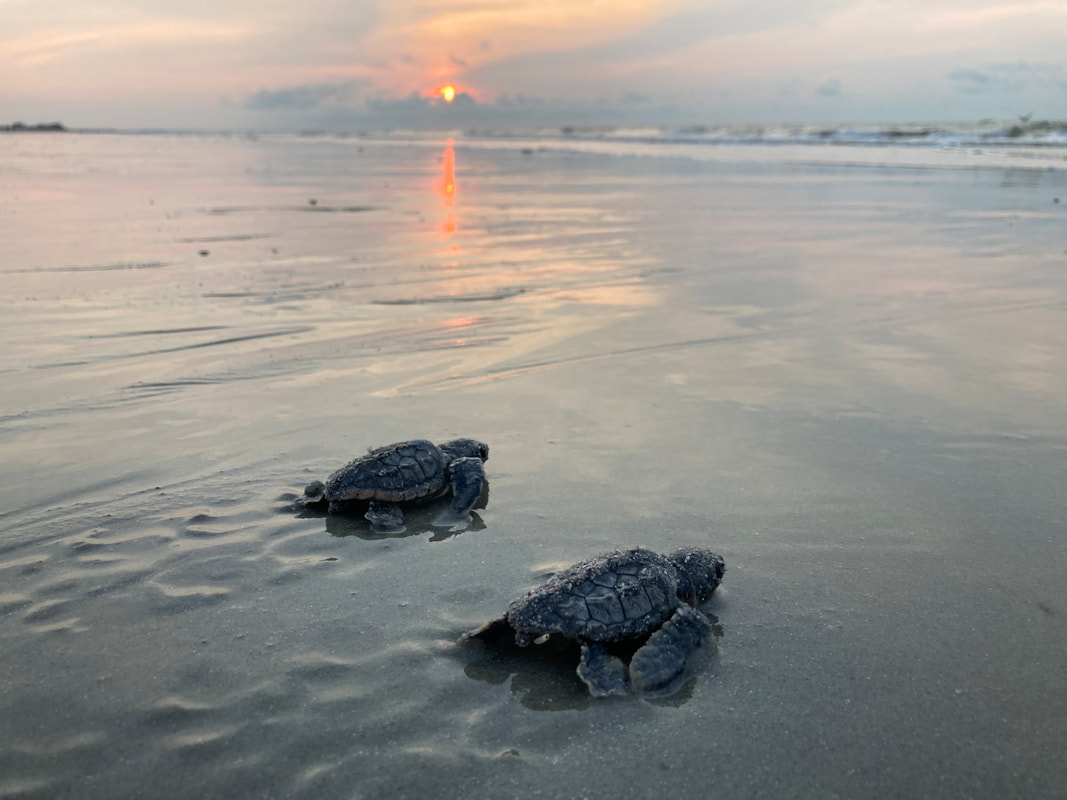|
If you are reading this, it means you have seen one of the labelled posts on Edisto Beach State Park! Thanks for scanning the QR code to learn more about it! This post is used as a marker for one of the buried temperature data loggers. Prior to the start of the 2022 Loggerhead (Caretta caretta) sea turtle nesting season, we installed sand temperature loggers in randomized locations along our 1.5-mile stretch of beach. We chose locations just above the Spring high tide line and locations closer to the dunes, where sea turtle nesting is most likely to occur. These temperature loggers will provide helpful insight into the temperatures that the incubating loggerhead sea turtle eggs will experience this season. Why is sand temperature important? Sea turtles, like most reptiles, have temperature-dependent sex determination (TSD). It has been determined that the warmer the sand during incubation, the more likely female hatchlings will be produced and the cooler the sand during incubation, the more likely male hatchlings will be produced. This pivotal temperature is approximately 29 degrees Celsius (84.2 degrees Fahrenheit) (Mrosovsky 1988). The most influential temperature on the sex determination process occurs during the middle third of incubation (Ackerman 1997). Loggerhead sea turtle incubation times can range from 45-70 days. The temperature the eggs experience during incubation will also influence developmental times, hatchling fitness and hatching and emergence success (Fisher et al. 2014). There are many other factors aside from sand temperature that can influence sea turtle hatchlings. Accumulated precipitation and humidity are considered to be the other climatic forces on the hatchling success (Montero et al. 2018). Although the temperature readings alone will not give a complete representation, beginning the collection of this data may assist future and greater-scale research projects in the state of South Carolina. References:
Ackerman, R. A., (1997). The nest environment and the embryonic development of sea turtles. In: The Biology of Sea Turtles (eds Lutz PL, Musick JA), pp. 83–106. CRC Press, Boca Raton. Fisher, L. R., Godfrey, M. H., & Owens, D. W., (2014). Incubation Temperature Effects on Hatchling Performance in the Loggerhead Sea Turtle (Caretta Caretta). PLoS One,9 (12), e114880. https://doi.org/10.1371/journal.pone.0114880 Montero, N., Ceriani, S. A., Graham, K., & Fuentes, M. M. P. B., (2018). Influences of the Local Climate on Loggerhead Hatchling Production in North Florida: Implications From Climate Change. Front. Mar. Sci. 5:262. https://doi.org/10.3389/fmars.2018.00262 Mrosovsky, N. (1988). Pivotal temperatures for loggerhead turtles (Caretta caretta) from northern and southern nesting beaches. Canadian Journal of Zoology, 66: 661-669. https://doi.org/10.1139/z88-098
2 Comments
Laurie Suber
7/1/2022 04:34:27 am
The Turtle Walk class is highly recommended. It was an amazing experience.
Reply
Robin
9/3/2022 01:57:11 pm
Love the turtles 🐢🐢🐢🐢🐢
Reply
Leave a Reply. |
Leah SchwartzentruberSea Turtle Biologist Archives
June 2024
|

 RSS Feed
RSS Feed